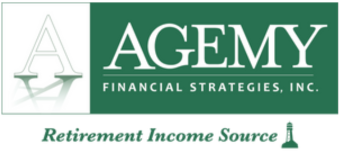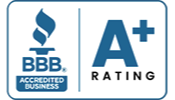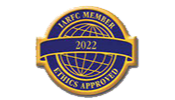5 Financial Planning Moves to Make Turning 50
July 06, 2022
From retirement security to living debt-free, turning 50 is your chance to make big moves in reaching your financial goals.
Reaching 50 is a huge milestone for many reasons. Your children have left home and may have a family of their own (hello “bank of mom and dad”).Your parents may need your help too, while your own future care is a looming worry. Retirement, which has seemed far in the future for decades, suddenly seems more real. 50 is an age where people reassess their financial life and aspects. You could even have your heart set on an early retirement. It’s time to make financial moves that will pay off in the future.
If you are in your 50s, are you set for retirement? Have you thought about how sturdy your financial plan is? Meeting with your trusted Fiduciaries at Agemy Financial Strategies can help you work through these items if you feel like you’re not fully prepared for retirement.
Pay Down Debt
Debt is probably the last thing you want to be dealing with before you retire. Calculate your current debt load and start paying off your larger debts first. Debt includes car loans, mortgages, credit card balances and personal loans.
A majority of retirees who have paid off their homes find it financially liberating to live without having a mortgage. By entering retirement without a big mortgage payment, you can live on less. If you’re in a situation where you can’t eliminate your mortgage, you could consider other options to reduce the cost.
Refinancing your home loan could give you a lower interest rate. If you decide to refinance your home, it’s important to look at the terms and conditions. Some people end up refinancing for what they think is a better deal, and end up having their refinance term be longer than their current mortgage.
Turn Savings into Income
You’ve saved for retirement for years. Now that retirement is approaching, how can you create a regular stream of income from these savings to help pay your outgoings? The first step in creating retirement income is to picture how you’d like to spend those years. This way you can understand how much money you’ll need and prioritize what’s most important. Next, create a list of goals to determine which things you might add or eliminate depending on your unique situation.
Based on your goals, create a realistic budget and find out how to revise it for different phases of retirement before making your withdrawal strategy. A withdrawal strategy helps you know how much you can take out of your savings and investments each year to cover your needs and wants. It should also outline which funds you’ll withdraw from during retirement and in what order, i.e., retirement accounts, taxable accounts, etc.
Most financial advisors will suggest the following order (least to the most tax-efficient accounts) because of tax implications and the assumption that your taxes will be lower later in retirement:
-
Taxable accounts – Non-Retirement Accounts
-
Tax-deferred accounts – Traditional IRAs and 401(k)s
-
Tax-exempt accounts – Roth IRA
The traditional approach has been that you can safely withdraw about 4% of the initial value of your retirement savings and increase that amount each year with inflation. However, it may no longer be safe with the current combination of low bond rates and high stock valuations. Add in the possibility of even higher inflation and longer average life spans, and you could face a significant chance of running out of money in retirement using the traditional 4% “safe” withdrawal rule. In which case, you can discuss other options with your advsor such as the 7% rule or r Annuitization. Be sure to discuss this method of retirement income with your Fiduciary. By purchasing an income annuity, you trade a lump sum of money for an income that’s guaranteed by an insurance company for as long as you live.
Life Insurance
If you don’t have a life insurance plan or have been living underinsured, now more than ever is a good time to consider you and your family’s needs. A general rule of thumb when it comes to life insurance is that your individual needs may vary based on such factors as:
- The amount of debt you would want paid off
- The number of charitable contributions you’d like to make upon your death.
- How much money (if any) you’d want to leave your spouse, children or relatives.
The need for life insurance doesn’t start or end when you reach a specific age. Oftentimes, when people reach their 50’s their insurance may be reaching its expiration date. When this happens, it could mean that their life insurance could go up.
One option to consider is converting your term policy into a whole life insurance policy. Whole life policies, while significantly more expensive than term insurance, offer the flexibility of tapping into the policy’s cash value while you’re still alive. You can borrow against the cash value of a life insurance policy or simply elect to take money from it, which will lessen the death benefit payout. However, be careful if you make that move.
If your children have left home, you may also need to review your life insurance requirements. Do you need life insurance or can your spouse financially support him–or herself? It also could be time to think about long-term care insurance. Long-term care is often needed by older people and can be expensive without insurance. While Medicaid can be available, it often requires that people drain their own assets first. It’s always important to discuss long-term care insurance with your trusted Fiduciary or financial advisor.
Review Your Estate Plan
Effective estate management enables you to manage your affairs during your lifetime and control the distribution of your wealth after death. An effective estate strategy can spell out your healthcare wishes and ensure that they’re carried out – even if you are unable to communicate. It can even designate someone to manage your financial affairs should you be unable to do so.An estate plan generally includes a Last Will and Testament, as well as powers of attorney for medical and financial affairs. It is wise to have an estate plan early in life, particularly if you have any assets or property worth protecting.
If you die without a will, your estate may be tied up in probate for months or even years. This includes all accounts—checking, savings and retirement—unless they are held jointly by your family members. Probate can also include your home (or other real estate) and personal property until the will goes through probate.
The best way to ensure that your assets are passed onto the people you want is to include them in your will. If you become incapacitated or ill, having a power of attorney in place will simplify both your life and the lives of your family members. Your full-service retirement planning firm can assist you in this area.
Review Your Risks
Risk management helps you ensure that your assets are protected.
In your 50s, you need to learn how to manage risk successfully. Failure to do so can be detrimental to your retirement. You always have the option to help avoid investment risk by choosing only safe, guaranteed retirement income investments. Choosing to avoid risk is one of the smartest decisions you can make until you have learned the skills you will need to manage risk appropriately.
However, ALL investments, even the most conservative, come with different types of risk. Understanding these risks (from Intrust Bank) will help you make educated choices in your retirement savings plan mix:
- Market risk: The risk that your investment could lose value due to falling prices caused by outside forces, such as economic factors or political and national events (e.g., elections or natural disasters). Stocks are typically most susceptible to market risk, although bonds and other investments can be affected as well.
- Interest rate risk: The risk that an investment’s value will fall due to rising interest rates. This type of risk is most associated with bonds, as bond prices typically fall when interest rates rise, and vice versa. But often stocks also react to changing interest rates.
- Inflation risk: The chance that your investments will not keep pace with inflation, or the rising cost of living. Investing too conservatively may put your investment dollars at risk of losing their purchasing power.
- Liquidity risk: This is the risk of not being able to quickly sell or cash-in your investment if you need access to the money.
- Risks associated with international investing: Currency fluctuations, political upheavals, unstable economies, additional taxes–these are just some of the special risks associated with investing outside the United States.
Don’t forget about personal and family risk, too:
- Death: Losing a spouse can reduce pension benefits or may add to the retiree’s financial burdens, especially if there are medical bills or other debts that need to be paid.
- Risks related to longevity or outliving your assets: The longer people live, the more money they’ll need. Retirement income can only last a certain length of time, so the longer you live, the less money you’ll have in your nest egg.
- Change in marital status: Separation or divorce can significantly reduce your retirement income as there’s a good chance you’ll have to split your pot.
- Financial assistance to family members: There may come a time when your children or other dependents may need some financial help, and they may turn to you. If you ch
These risks tend to affect the personal lives of retirees.
Diversify Your Portfolio
All investors–whether aggressive, conservative, or somewhere in the middle–can potentially benefit from diversification, which means not putting all your eggs in one basket. If something were to happen to that basket, you’d lose all of your eggs. To mitigate that risk, it’s wise to spread out your assets. When applied to investing, this proverb directly speaks to the value of portfolio diversification.
When you reach your 50’s you’ll want to try and minimize the amount of mistakes you can make financially – especially ones that could derail your retirement plan. It’s important to review your portfolio with a trusted financial advisor to make sure you’re on the right track when it comes to diversification strategies.
At Agemy Financial Strategies, we will sit down with you and discuss how you can diversify your portfolio for maximum retirement income. Once you reach 50, you want to be able to reap all of the benefits from your investments, especially if you’re planning on an early retirement.
Let’s Get Started
Your 50s are a pivotal decade. Capitalize on these years by firming up plans and feathering the nest for a secure retirement.
It’s important to look at your financial plans and see if any of the above strategies could help you in the long run. If you’re like most people, qualified-retirement plans, Social Security, personal savings and investments are expected to play a role. Once you have estimated the amount of money you may need for retirement, a sound approach involves taking a close look at your potential retirement-income sources and making amendments where needed.
At Agemy Financial Strategies, we want you to know we’re here to help you navigate retirement and any questions that come up during your retirement process. As Fiduciary advisors, it’s our duty to act on your behalf in finding the right solutions for your individual wants and needs.
For more information on our retirement and financial planning services, contact us here today.







Leave a Reply
Want to join the discussion?Feel free to contribute!